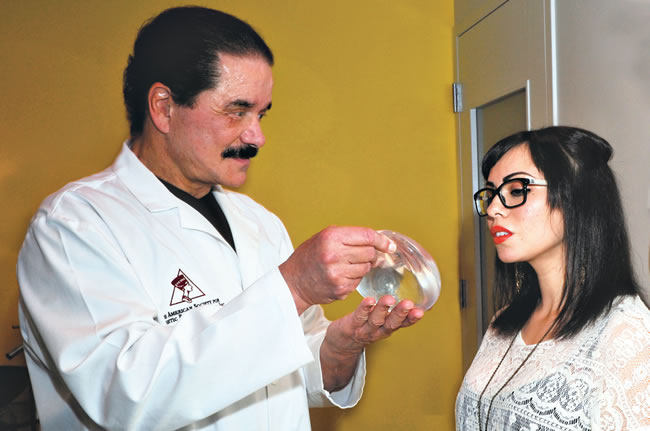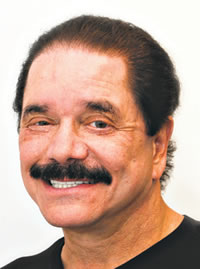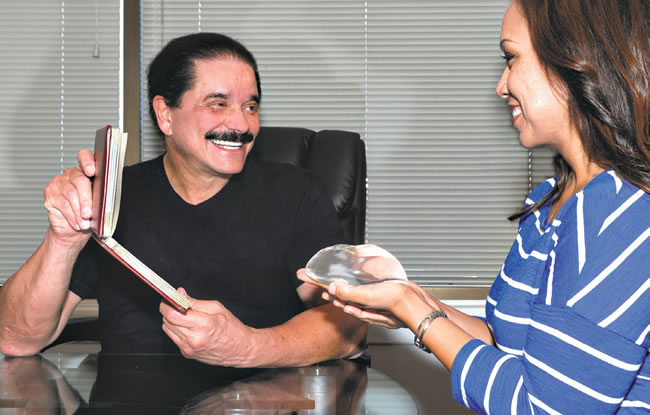Post-pregnancy Rejuvenation
DR. LARRY SCHLESINGER
Cosmetic plastic surgeon
Where did you receive your schooling and training?
I went to medical school at the Medical College of Virginia in Richmond. I did my internship at Tripler, my residency in general surgery at Stanford in Palo Alto and my plastic surgery fellowship at the University of Oklahoma.
How long have you been a practicing plastic surgeon?
Thirty-one years.
You offer a service called Mommy Makeover.
The Mommy Makeover is a compilation of multiple plastic surgeries that together are a post-pregnancy rejuvenation. The cornerstone is the tummy tuck or abdominoplasty. Then there’s either breast augmentation or a breast lift, or a combination of the two. Pregnancy causes multiple areas to get big that were never big before, so we liposuction that out. Vaginal rejuvenation, or labiaplasty, is becoming a very popular operation. Pregnancy or use of birth control pills can cause a “mask of pregnancy,” or hyperpigmentation, on the face, which I address. Those five elements make up the Mommy Makeover.
Can you describe each in a bit more detail?
Tummy tuck: A key element is you’ve got to do a great belly button. When I was being trained, belly buttons were irrelevant. Today it’s an object of art. People wear open midriffs, they put jewelry in it. If the belly button is horribly scarred, you’ve ruined the whole effect. The second key element is the abdominoplasty incision. Some results posted on the Internet are frightening; the scars are terrible. If the abdomino-plasty is done correctly with no tension on the suture line, you can put super glue on the top, and that gives you a very nice scar.

Veronica Campbell gets a consultation on silicone breast augmentation from Dr. Larry
Nathalie Walker photos,nwalker@midweek.com
It doesn’t end at surgery. It ends when you’ve got the best conceivable scar. We tape the scars with a very expensive Steri-Strip that contains linen, and the glue is very strong. Scars are red because the scar is dynamic, with new collagen coming in and old collagen going out. The redness is the blood vessels, the engine that creates the new collagen. When a scar turns white, it’s static. Instead of coming in flat, the collagen comes in whirls and swirls, which is why scars are red and heaped up. If you lay tape right along that, you create a situation where you teach the collagen how to come in. The quicker it comes in smooth, the quicker it stops being dynamic and becomes static. This tape is an important part of getting the best possible scar.
Finally, with pregnancy, as the uterus grows bigger, it has to come forward and the rectus muscles, the muscles of the abdomen, separate. After the first pregnancy sometimes they come back together.
After the second pregnancy they never come back together. If you don’t put the muscles together, you can get a great overall look, but you have a bulge that’s usually from the belly button down. Most women who’ve had multiple pregnancies end up with low back pain because the abdominal muscles cannot work in conjunction with the back muscles. When you sew them together, the abdominal muscles counterbalance the muscles of the back and you get rid of chronic low back pain one gets post pregnancy.
Breast surgery: With standard breast augmentation, there are lots of routes of entry and lots of positions. I don’t like saline implants because they deflate. The silicone implants today are very safe. We put the implants below the muscle because they stay softer and look more natural. I put all of my implants in through the armpit so there’s no visible scar. The thinner the skin, the finer the scar, and no one intentionally looks in your armpits, so it’s a hidden scar.
Liposuction: I did the very first liposuction in Hawaii with another plastic surgeon in 1983. We’ve gotten much more sophisticated since then – sometimes too sophisticated. Liposuction, with certain modifications, is the same as it was in ’83. We have better equipment and better technique, but other than that, liposuction is still liposuction. There are some fancy advances, but each has several downsides.
Vaginoplasty: What women want is not to have any of the labia minora hang outside of the labia majora. That’s an unattractive look and if they’re too large, it interferes with intercourse and can become painful and get chaffed. For the longest time, gynecologists would just trim off the excess. There are some downsides to that, so a friend of mine, a good plastic surgeon, came up with a great idea. Instead of trimming off the edge, you take a wedge out. That’s how we make smaller earlobes, and he felt the labia majora looked a lot like an earlobe. A second great advantage to that is you not only get rid of the portion that’s hanging out, but you tighten the opening to the vagina called the introitis. Something that can go along with the labi-aplasty is the hood on the clitoris, if it’s excessive, can interfere with positive stimulations, so that it’s now become popular to do a little clitoral hood reduction. This is done in a way that leaves no scar near the clitoris.
Facial hyperpigmentation: When I was going through my training they said you can’t get rid of hyperpigmentation, it’s impossible. It’s also called melasma or chloasma, and the problem with the most popular product for it today is it not only attacks the pigment in the hyperpig-mented area, but it attacks all the pigment in your skin. I wanted to find something that would work decently, so I worked with a pharmacist in Aiea and we came up with a com pound that’s working really nicely.
How long does the whole process take?
A month. They can all be done at one surgery. I like what one woman told me. She said what she wanted was not a perfect body, she wanted freedom from debilitating insecurities. Before she was pregnant she was very happy with the way she looked. After delivering three children she was not. These insecurities were on her mind all the time. The surgery took them away so that she had more psychological energy to give to her kids and her family.







